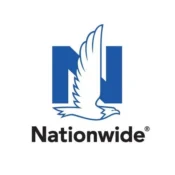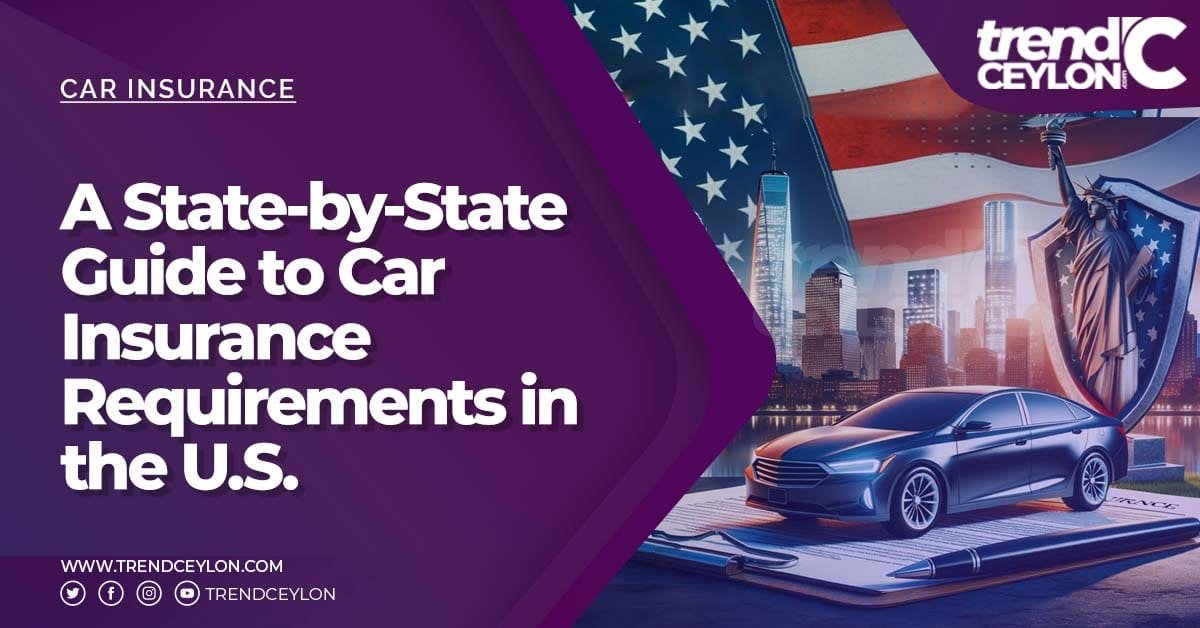Navigating through the diverse landscape of car insurance requirements in the United States can be quite challenging. With each state setting its own rules, it’s crucial for drivers to have a clear understanding to ensure they are legally compliant and adequately protected. This comprehensive guide offers an in-depth look at car insurance requirements across the U.S., with a specific focus on the variations from state to state.
Understanding the Basics of Car Insurance
What is Car Insurance?
Car insurance is essentially a contract between you and an insurance company. You agree to pay premiums, and in exchange, the insurer commits to covering certain financial losses that might occur due to accidents, theft, or other damages involving your vehicle.
The Importance of Car Insurance
Car insurance is vital for several reasons. It protects you financially from potentially crippling costs associated with vehicle accidents. Additionally, it’s a legal requirement in most U.S. states to ensure that all drivers on the road have some form of financial responsibility.
State-Specific Insurance Requirements
Navigating Minimum Liability Coverage
Liability coverage is the most basic form of car insurance and is required in most states. It covers the costs of injuries or damages you may cause to others in an accident. However, the minimum required amount varies by state, and understanding these differences is crucial.
Understanding No-Fault States and PIP
In no-fault states, drivers are required to have Personal Injury Protection (PIP). This insurance covers your medical expenses regardless of who is at fault in an accident. States like Florida and Michigan are examples of no-fault states.
The Role of Uninsured/Underinsured Motorist Coverage
This coverage is essential in protecting you if you’re in an accident with someone who either doesn’t have insurance or has insufficient coverage. States like Illinois and New York mandate this coverage.
Comprehensive and Collision Coverage
While not legally required, comprehensive and collision coverage is often recommended. They cover damages to your vehicle from non-collision-related incidents and accidents, respectively.
Detailed State-by-State Analysis

Here, we will provide specific details for each state. This would include:
Alabama
- Minimum Liability: Includes $25,000 for bodily injury per person, $50,000 per accident, and $25,000 for property damage.
- Uninsured Motorist Coverage: Not required.
Alaska
- Minimum Liability: More than many states, $50,000 for bodily injury per person, $100,000 per accident, and $25,000 for property damage.
- Uninsured Motorist Coverage: Optional but recommended due to severe weather conditions.
Arizona
- Minimum Liability: $25,000 for bodily injury per person, $50,000 per accident, and $15,000 for property damage.
- Uninsured Motorist Coverage: Not mandatory.
Arkansas
- Minimum Liability: $25,000 for bodily injury per person, $50,000 per accident, and $25,000 for property damage.
- Uninsured Motorist Coverage: Required.
California
- Minimum Liability: Relatively low at $15,000 for bodily injury per person, $30,000 per accident, and $5,000 for property damage.
- Uninsured Motorist Coverage: Optional.
Colorado
- Minimum Liability: $25,000 for bodily injury per person, $50,000 per accident, and $15,000 for property damage.
- Uninsured Motorist Coverage: Mandatory.
Connecticut
- Minimum Liability: $25,000 for bodily injury per person, $50,000 per accident, and $25,000 for property damage.
- Uninsured Motorist Coverage: Required.
Delaware
- Minimum Liability: $25,000 for bodily injury per person, $50,000 per accident, and $10,000 for property damage.
- Uninsured Motorist Coverage: Required.
Florida
- No-Fault State: Requires $10,000 in Personal Injury Protection (PIP) and $10,000 property damage liability.
- Bodily Injury Liability: Not required by law but often recommended.
Georgia
- Minimum Liability: $25,000 for bodily injury per person, $50,000 per accident, and $25,000 for property damage.
- Uninsured Motorist Coverage: Optional.
Hawaii
- No-Fault State: Requires Personal Injury Protection.
- Minimum Liability: $20,000 for bodily injury per person, $40,000 per accident, and $10,000 for property damage.

Idaho
- Minimum Liability: $25,000 for bodily injury per person, $50,000 per accident, and $15,000 for property damage.
- Uninsured Motorist Coverage: Optional but recommended.
Illinois
- Minimum Liability: $25,000 for bodily injury per person, $50,000 per accident, and $20,000 for property damage.
- Uninsured Motorist Coverage: Mandatory.
Indiana
- Minimum Liability: $25,000 for bodily injury per person, $50,000 per accident, and $25,000 for property damage.
- Uninsured Motorist Coverage: Optional.
Iowa
- Minimum Liability: $20,000 for bodily injury per person, $40,000 per accident, and $15,000 for property damage.
- Uninsured Motorist Coverage: Not required but often included unless declined.
Kansas
- No-Fault State: Requires Personal Injury Protection.
- Minimum Liability: $25,000 for bodily injury per person, $50,000 per accident, and $25,000 for property damage.
Kentucky
- No-Fault State: Requires Personal Injury Protection.
- Minimum Liability: $25,000 for bodily injury per person, $50,000 per accident, and $25,000 for property damage.
Louisiana
- Minimum Liability: $15,000 for bodily injury per person, $30,000 per accident, and $25,000 for property damage.
- Uninsured Motorist Coverage: Optional.
Maine
- Minimum Liability: Higher requirements at $50,000 for bodily injury per person, $100,000 per accident, and $25,000 for property damage.
- Uninsured Motorist Coverage: Mandatory.
Maryland
- Minimum Liability: $30,000 for bodily injury per person, $60,000 per accident, and $15,000 for property damage.
- Uninsured Motorist Coverage: Required.
Massachusetts
- No-Fault State: Requires Personal Injury Protection.
- Minimum Liability: $20,000 for bodily injury per person, $40,000 per accident, and $5,000 for property damage.
Michigan
- No-Fault State: Requires Personal Injury Protection.
- Minimum Liability: $50,000 for bodily injury per person, $100,000 per accident, and $10,000 for property damage in another state.
Minnesota
- No-Fault State: Requires Personal Injury Protection.
- Minimum Liability: $30,000 for bodily injury per person, $60,000 per accident, and $10,000 for property damage.
Mississippi
- Minimum Liability: $25,000 for bodily injury per person, $50,000 per accident, and $25,000 for property damage.
- Uninsured Motorist Coverage: Not required.
Missouri
- Minimum Liability: $25,000 for bodily injury per person, $50,000 per accident, and $25,000 for property damage.
- Uninsured Motorist Coverage: Mandatory.
Montana
- Minimum Liability: $25,000 for bodily injury per person, $50,000 per accident, and $20,000 for property damage.
- Uninsured Motorist Coverage: Optional.
Nebraska
- Minimum Liability: $25,000 for bodily injury per person, $50,000 per accident, and $25,000 for property damage.
- Uninsured Motorist Coverage: Required.
Nevada
- Minimum Liability: $25,000 for bodily injury per person, $50,000 per accident, and $20,000 for property damage.
- Uninsured Motorist Coverage: Not required.
New Hampshire
- Financial Responsibility Only: No mandatory insurance requirement, but proof of financial responsibility is required in the event of an accident.
- Uninsured Motorist Coverage: Recommended if purchasing insurance.
New Jersey
- Choice No-Fault State: Offers a choice between no-fault or traditional liability coverage.
- Minimum Liability: $15,000 for bodily injury per person, $30,000 per accident, and $5,000 for property damage.
New Mexico
- Minimum Liability: $25,000 for bodily injury per person, $50,000 per accident, and $10,000 for property damage.
- Uninsured Motorist Coverage: Optional.

New York
- No-Fault State: Requires Personal Injury Protection.
- Minimum Liability: $25,000 for bodily injury per person, $50,000 per accident, and $10,000 for property damage.
North Carolina
- Minimum Liability: $30,000 for bodily injury per person, $60,000 per accident, and $25,000 for property damage.
- Uninsured Motorist Coverage: Mandatory.
North Dakota
- No-Fault State: Requires Personal Injury Protection.
- Minimum Liability: $25,000 for bodily injury per person, $50,000 per accident, and $25,000 for property damage.
Ohio
- Minimum Liability: $25,000 for bodily injury per person, $50,000 per accident, and $25,000 for property damage.
- Uninsured Motorist Coverage: Optional.
Oklahoma
- Minimum Liability: $25,000 for bodily injury per person, $50,000 per accident, and $25,000 for property damage.
- Uninsured Motorist Coverage: Not required.
Oregon
- Minimum Liability: $25,000 for bodily injury per person, $50,000 per accident, and $20,000 for property damage.
- Uninsured Motorist Coverage: Mandatory, along with Personal Injury Protection.
Pennsylvania
- Choice No-Fault State: Offers a choice between no-fault or traditional liability coverage.
- Minimum Liability: $15,000 for bodily injury per person, $30,000 per accident, and $5,000 for property damage.
Rhode Island
- Minimum Liability: $25,000 for bodily injury per person, $50,000 per accident, and $25,000 for property damage.
- Uninsured Motorist Coverage: Optional.
South Carolina
- Minimum Liability: $25,000 for bodily injury per person, $50,000 per accident, and $25,000 for property damage.
- Uninsured Motorist Coverage: Mandatory.
South Dakota
- Minimum Liability: $25,000 for bodily injury per person, $50,000 per accident, and $25,000 for property damage.
- Uninsured Motorist Coverage: Required.
Tennessee
- Minimum Liability: $25,000 for bodily injury per person, $50,000 per accident, and $15,000 for property damage.
- Uninsured Motorist Coverage: Not required but recommended.
Texas
- Minimum Liability: $30,000 for bodily injury per person, $60,000 per accident, and $25,000 for property damage.
- Uninsured Motorist Coverage: Optional but highly recommended.
Utah
- No-Fault State: Requires Personal Injury Protection.
- Minimum Liability: $25,000 for bodily injury per person, $65,000 per accident, and $15,000 for property damage.
Vermont
- Minimum Liability: $25,000 for bodily injury per person, $50,000 per accident, and $10,000 for property damage.
- Uninsured Motorist Coverage: Mandatory.
Virginia
- Minimum Liability: $25,000 for bodily injury per person, $50,000 per accident, and $20,000 for property damage.
- Uninsured Motorist Coverage: Mandatory, but insurance can be waived for a fee.
Washington
- Minimum Liability: $25,000 for bodily injury per person, $50,000 per accident, and $10,000 for property damage.
- Uninsured Motorist Coverage: Optional.
West Virginia
- Minimum Liability: $25,000 for bodily injury per person, $50,000 per accident, and $25,000 for property damage.
- Uninsured Motorist Coverage: Mandatory.
Wisconsin
- Minimum Liability: $25,000 for bodily injury per person, $50,000 per accident, and $10,000 for property damage.
- Uninsured Motorist Coverage: Required.
Wyoming
- Minimum Liability: $25,000 for bodily injury per person, $50,000 per accident, and $20,000 for property damage.
- Uninsured Motorist Coverage: Not required.
Frequently Asked Questions
What are the Consequences of Driving Without Insurance?
Driving without insurance can result in severe penalties, including fines, vehicle impoundment, and in some states, imprisonment.
How Do I Select the Right Coverage?
The right coverage depends on your state’s requirements, personal circumstances (like vehicle value and driving habits), and financial situation.
Expert Tips for Optimal Insurance Coverage
Regularly Compare Insurance Rates
Insurance rates vary; regularly comparing offers can lead to better deals and more appropriate coverage.
Consider Your Vehicle and Driving Habits
Opting for more than the minimum coverage might be wise if you drive a high-value vehicle or have a long commute.
Check for Discounts
Many insurance companies offer discounts that can significantly lower your premiums, such as safe driver discounts, multi-policy discounts, and student discounts.
Understanding car insurance requirements is crucial for legal compliance and financial protection. This state-by-state guide serves as a resource for drivers across the U.S. to make informed decisions about their car insurance needs.

















